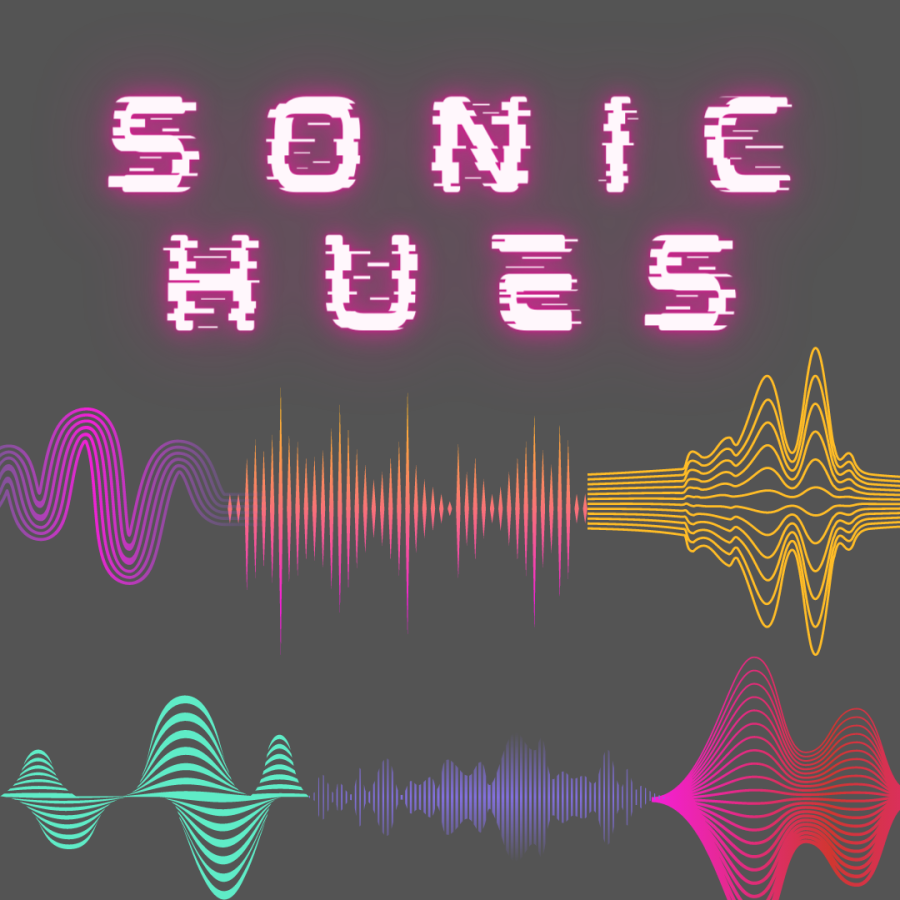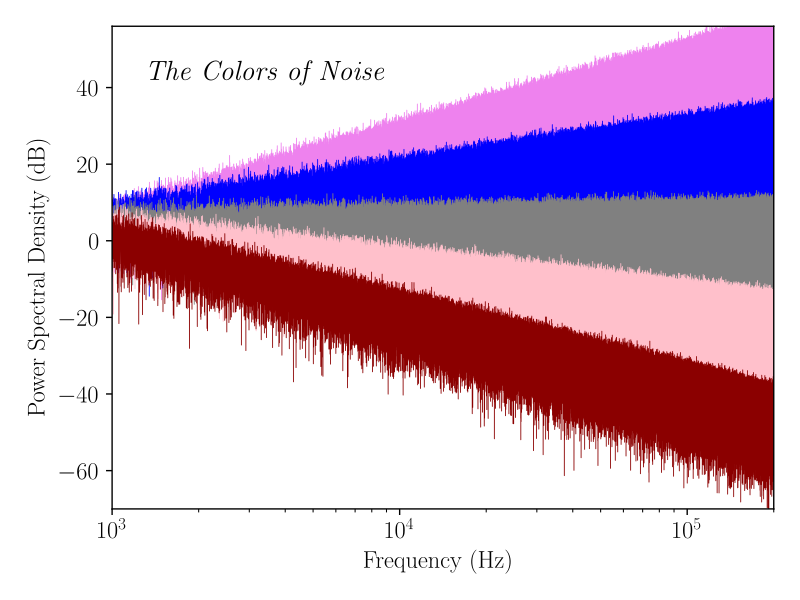What Are Sonic Hues? White Noise, Brown Noise, Pink Noise, and More
There’s a whole rainbow of sounds…
Made with Canva.
March 20, 2023
White Noise
Many are familiar with white noise, a continuous, grainy sound that contains all audible sound frequencies at equal intensity. People often liken white noise to radio static, whirring fans, heavy rain, and wind, and the noise is said to have certain effects on its listeners. White noise has been known to improve focus and productivity, aid in a good night’s sleep, soothe crying babies, and counteract symptoms of ADHD. These benefits are attributed to the sound’s ability to mask other noises that can stimulate your brain.
Recently, more sonic hues, such as brown noise and pink noise, have been gaining popularity due to Internet users raving about their benefits. Sonic hues are a part of the noise spectrum; the color of the sound relates to the power on the spectrum of a noise signal, or the frequencies it includes. Differences in sonic hues are characterized by different intensities of the frequencies that are included in the noise. For instance, like white noise, pink noise contains all frequencies of audible sound, but instead of all frequencies being at the same intensity, the energy is more intense at lower frequencies to illicit different effects in its users.
Brown Noise on TikTok
Brown noise became especially popular on TikTok, when some users documented their use of the sound. People on the platform expressed their relief from ADHD symptoms and how the noise calms their minds. Many have now integrated brown noise into their everyday routines, playing it in the background while they study for school, do homework, or read. The popularization of brown noise has given way to other sonic hues becoming commonly used, and many trying the noises on for size. Here are some (of many) renowned sonic hues and their uses, effects, and sources:
Meet the Sonic Hues
Brown noise: Brown noise, also called red noise, has higher energy at lower frequencies and has a deeper and stronger sound as compared to white noise. Some things that emit brown noise are strong waterfalls and soft thunder, and it is often described as a ‘low roaring’. Its benefits include sound sleep, noise blocking, enhanced relaxation, and improved focus.
Pink noise: Pink noise contains all audible frequencies, with more intensity in the lower ones, making it slightly deeper sounding than white noise. Some sources of pink noise are heartbeats, rainfall, wind, and rustling leaves. Its benefits include falling asleep quicker, staying asleep longer, improving memory, and noise filtering.
Green noise: Green noise is a kind of white noise, but instead with an emphasis on the middle frequencies, allowing for a soothing sound that is reminiscent of nature. Green noise is often found when listening to the ocean, the wind, and is said to have been helpful for many to enhance calmness and therefore help with sleep.
Violet noise: Violet noise is also similar to white noise, but with the higher frequencies of sound being more intense than the others, and it is said to have a sort of hissing sound. Violet noise can be heard from the running water of a faucet or the whirring of a printer. It’s said to be helpful in treating tinnitus, a condition of hearing loss characterized by consistent ringing or buzzing in one’s ears.
Here is a playlist on YouTube of many of these beneficial sonic hues, with the videos being hours long so you can play them while you sleep or for other extended periods of time. There are also playlists on Spotify and other streaming platforms of these ‘colors’ of noise for your listening pleasure.
How They Worked For Me
I tried out all of the sonic hues listed above for myself, and here is how they worked for me with their respective intended uses. It’s important to keep in mind that my results are not representative of what may work for everyone, as I am one individual person. I don’t have ADHD or trouble sleeping, so I cannot speak for those who use these noises to mitigate their symptoms of said disorders.
White noise: I put on White noise in the background while writing an essay, and it did help to improve my productivity, but my focus was lacking, as I frequently went on my phone. When I was actively writing, I didn’t notice my mind wandering at all, which could be taken as a sign of its effectiveness. Also, I did find that the White noise filtered out some background noise that was going on in my house, but it was no match for my phone buzzing next to me. The noise was more pleasant to listen to than I thought it would be and it had a smooth, soothing sound.
Brown noise: I turned on Brown noise in the background while I was taking a Sociology quiz, and I think it worked to help me focus, relax, and block out other noises as it is intended to. I got through the quiz quicker than I usually do, with nothing really distracting me from the task. I found the sound more pleasant and calming than pink noise, as its lower frequencies are much more pronounced. The Brown noise almost blended in entirely with the noise of my computer whirring, so the noise itself didn’t really beg much attention from me. This allowed me to focus on what I was doing and not be influenced by a potential placebo effect.
Pink noise: I played Pink noise in the background while I was taking APUSH notes, in hopes of enhancing my memory and filtering out noise. It actually irritated me when I consciously focused on the noise, but I began to not notice it after a while. Although Pink noise is supposed to be deeper than White noise, the high frequencies in particular bothered me a lot. Overall, I found it annoying and it made me feel tense, but I was motivated enough to finish all of the notes. Maybe that just came from a desire to complete them so I could turn the noise off.
Green noise: I put on Green noise before I went to sleep and understood the comparison to nature, as I was immediately calm. The noise reminded me of a waterfall, and I think that the middle frequencies being more emphasized was what set Green noise apart from the others for me. I fell asleep earlier than I usually do, and I hit snooze on my alarm multiple times in the morning.
Violet noise: I played Violet noise in Gator’s Eye while I was writing an article and the noise was kind of irritating. It wasn’t as bad as the Pink noise, but it definitely didn’t help me focus or anything. I think that I’m averse to the sonic hues with more intense high frequencies, as I definitely heard the hissing sound. Violet noise’s main purpose is to help treat tinnitus which I’m not afflicted with, so I can’t speak on any results of that sort.
Takeaway
All in all, I think it’s worth trying out all of the different sonic hues to see if any of them help you focus, sleep, relax, etc. I’d definitely use Green and Brown noise again, but I can’t say the same for the others. It’s important to note that these noises are not magical cures to all maladies, but rather a supplemental method that you can incorporate into your routines to improve your day-to-day.








